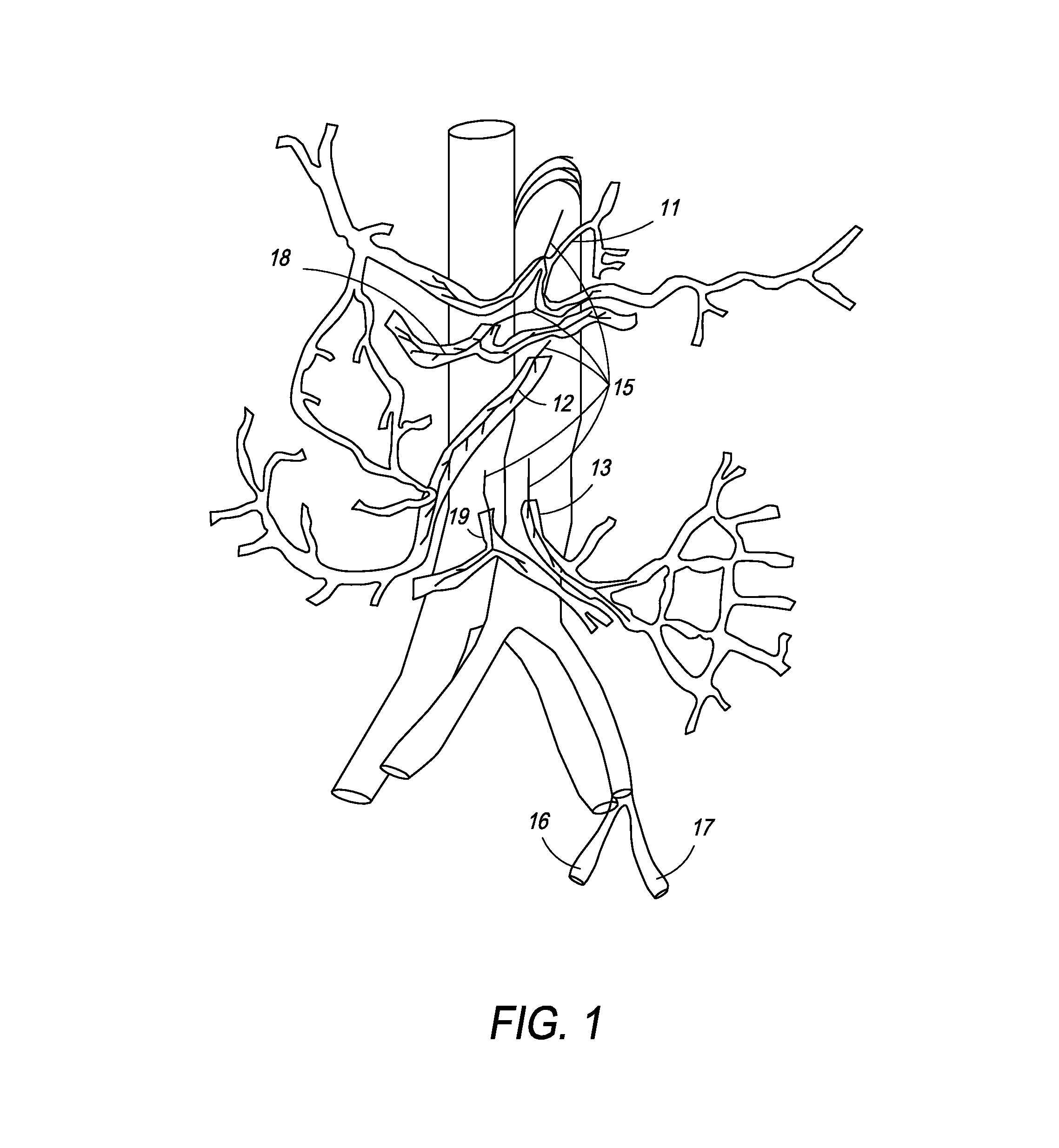Method and apparatus for stimulating the vascular system
a vascular system and stimulation technology, applied in the field of obesity management, can solve the problems of high-efficiency pharmaceutical treatment that has not yet been developed, consumers, pharmaceutical providers, and/or their insurers, and achieves the effect of reducing appetite and inducing feelings of satiety
- Summary
- Abstract
- Description
- Claims
- Application Information
AI Technical Summary
Benefits of technology
Problems solved by technology
Method used
Image
Examples
example 1
[0077]A mesenteric electrical stimulator is laparoscopically implanted into an adult male subject. The stimulator leads are implanted on the external surface of the celiac and superior mesenteric artery and the microcontroller is implanted in a pocket in the anterior abdominal wall.
[0078]Using remote control signals, the microcontroller sends multiple bursts of 10 rectangular pulses after a preset time delay of 10 minutes from the beginning of the meal. The microcontroller sends electrical stimuli having a pulse amplitude of 10 mAmp and a burst frequency of 2 bursts per second. The pulse trains are interrupted by a quiescent phase of 500 milliseconds (msec). The stimulation is carried out until patient stops eating after which the stimulation stops.
example 2
[0079]In acute experiments, mesenteric vascular stimulation is implanted into the mesenteric vasculature of a pig. The stimulator leads are implanted on the external surface of the celiac and superior mesenteric artery and is controlled by an external microcontroller. A typical stimulation parameter can have a burst of 10 pulses with a pulse amplitude of 20 mAmp and a burst frequency of 0.5 bursts per second. The duration of each bursts of 10 pulses is 400 msec with quiescent phase of 1600 msec to allow for repolarization of the mesenteric vascular muscle. The pulse trains will induce contraction of the celiac and superior mesenteric artery resulting in physiological obstruction to the flow of blood to the stomach and intestine. The decrease in the blood flow can be measured using a Doppler flow meter.
example 3
[0080]For chronic survival experiments, the stimulator is implanted into the mesenteric vasculature of the pig. The stimulator leads are implanted on the external surface of the celiac and superior mesenteric artery and the microcontroller is implanted in a pocket in the anterior abdominal wall or worn on a jacket or belt. A typical stimulation parameter can have a burst of 10 pulses with a pulse amplitude of 10 mAmp, duration of 400 msec and a burst frequency of 0.5 bursts per second. The burst trains are interrupted by a quiescent phase of 1600 msec to allow for repolarization of the mesenteric vascular muscle. The stimulator is turned on and off randomly and the food intake during on periods is compared to off period documenting lower food and calorie intake when the stimulator is on. In addition stimulator can be turned on continuously. The animal is allowed to free feed. Serial weight measures shows less weight gain or weight loss compared to free fed animals that do not have t...
PUM
 Login to View More
Login to View More Abstract
Description
Claims
Application Information
 Login to View More
Login to View More - R&D
- Intellectual Property
- Life Sciences
- Materials
- Tech Scout
- Unparalleled Data Quality
- Higher Quality Content
- 60% Fewer Hallucinations
Browse by: Latest US Patents, China's latest patents, Technical Efficacy Thesaurus, Application Domain, Technology Topic, Popular Technical Reports.
© 2025 PatSnap. All rights reserved.Legal|Privacy policy|Modern Slavery Act Transparency Statement|Sitemap|About US| Contact US: help@patsnap.com



